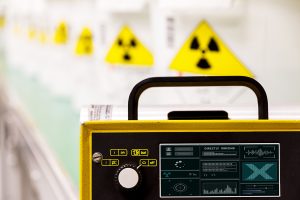
Operators who perform maintenance on nuclear reactors use ictometers to measure the neutron flux around the reactor. Strategically placed sensors transform the neutrons detected into electrical pulses, which are in turn centralized and counted by the ictometer. As the older generation of ictometers reaches obsolescence, CEA List, a member of the Carnot Network, drew on its know-how in several fields to design a completely new measurement system for an equipment manufacturer. The powerful, integrated device was developed to meet today’s requirements.
CEA List leveraged the know-how available at its PACT sensor and processing lab to develop a multi-channel digital ictometer that can measure radioactivity at several (in this case, four) points simultaneously. CEA List also designed the device’s acquisition circuit, which transforms current pulses into voltage pulses, which are then digitized, analyzed, and counted to reliably and reproducibly generate usable data for operators.
The new ictometer also has some additional added-value features like data logs covering several days, charts that make tracking neutron fluxes easier, and a specially designed human-machine interface that displays results in a way that is useful to operators in the field. Other features, such as the integration of step-by-step operator instructions are already on the drawing board.
This end-to-end system does everything from measure to generate actionable data. Not only is it a fine illustration of CEA List’s comprehensive digital instrumentation know-how, but it also provides nuclear-industry equipment manufacturers with an innovation that will change the way measurements are taken in the field.
Read article at http://www.cea-tech.fr/